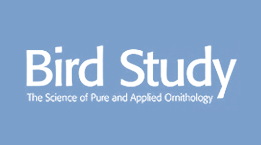Mortality rates in the national bird ringing programme of Denmark and the Faroe Islands
Mortality varies across capture methods but remains overall low.
To investigate mortality associated with ringing operations in Denmark and the Faroe Islands, including the effects of species and capture methods.
We analyzed data for mortality rates of birds arising from ringing operations in Denmark and the Faroe Islands over a 20-year period. The data included a variety of capture methods and altogether the reports involve 1.8 million individuals.
The overall mortality rate during ringing operations was 0.16%. The dominant form of capture, mist-netting, had a mortality rate of 0.21%, comparable to similar published studies. Capture methods with higher mortality rates were generally used in research aimed at informing management decisions. Predation was directly responsible for most deaths, with the Eurasian Sparrowhawk Accipiter nisus being the most common predator of birds captured in nets. Migrating passerines occurring in large numbers at bird observatories contributed most to the mortality rates in Denmark, with young birds on their first autumn migration being especially prevalent.
Overall, our study confirms that bird ringing remains an acceptable method of data collection and highlights the variation in mortality among species and methods. The results should be used to inform working practices to minimize any associated mortality, as far as possible.


